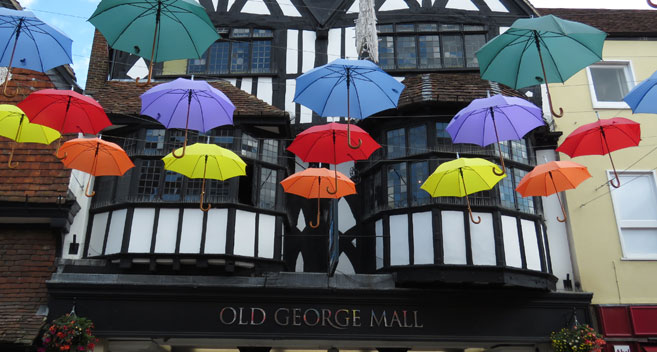
By Elaine Massung
Do you believe in time travel? I do. Not in a TARDIS or DeLorean, but through the power of a place to transport you to another era. A recent trip to the city of Salisbury was the perfect illustration of how the past and present live side by side, and where, in the space of only one weekend, it is possible to travel across the centuries.
I began my journey at the stunning Salisbury Cathedral, a testament to the ingenuity and dedication of humankind. I had visited the cathedral before so I was familiar with the basic facts: it was constructed over a 38-year period in the 13th century, with its famous 404-foot spire built a century later. All of which were built on only four and a half feet of foundations, so the fact that it was still standing after 800 years is owed to remarkable feat of engineering and luck.
This could be learned in any guidebook, but what helped send me back in time was an opportunity to go on a behind-the-scenes tour of the tower. This climb takes you up 332 steps in five manageable sections, allowing you to see the construction of the cathedral from a completely different vantage point. There are builders’ marks in the stone, vast timbers imported from Ireland, wrought-iron supports that would not seem out of place in a shipyard, and the centuries-old graffiti of past visitors. Hearing the bell chime from within the tower itself is an experience not to be forgotten, not only because it takes 30 seconds for the sound of the hour bell to fade away!
At the top of the tower sits a walking wheel, one of only four original ones left in the country. This was what powered the construction of the building and, with up to four men walking on it, it’s estimated that one tonne of stone could be raised 200 feet in 35 minutes. The higher I climbed, the more I imagined what it must have been like to work on such a massive structure, creating the medieval vision of heaven on earth.
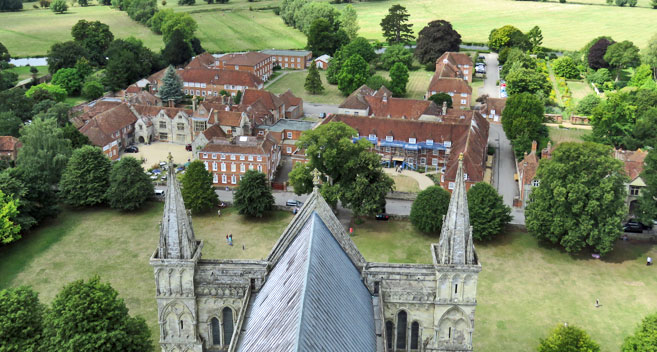
And the view from the top? Spectacular. I was fortunate to enjoy a clear day, where it was possible to see the site of Old Sarum in the distance and take in the buildings around the Cathedral Close and the colourful umbrella display along the High Street. If you have a head for heights and want a different perspective on a Salisbury treasure, consider adding the Tower Tour to your itinerary.
From the heights of the Middle Ages, I travelled onwards to Fisherton Mill, a former 19th century grain mill. Set back from the road in a quiet courtyard, the café serves as a place to refuel with delicious food and tempting treats. With the body satisfied, you can then feed the soul and find inspiration by visiting the art studios and largest independent art gallery in the southwest. I am already planning to return for Christmas shopping, and maybe another one of the delicious cakes!
Next up was a visit to the closest thing we have to an actual time machine, the Wessex Gallery of Archaeology at the Salisbury Museum. The gallery does a fantastic job of guiding visitors through the ages, from the not-too-distant past to the very depths of prehistory. Although Stonehenge may be the best known archaeology site in the county—if not the entire country—Wiltshire is also fortunate to have sites that span across millennia. The gallery is a fantastic opportunity to meet the people of the past through their skeletal remains, see the artefacts they have left behind, and even trace the development of archaeology itself through the Pitt-Rivers collection.
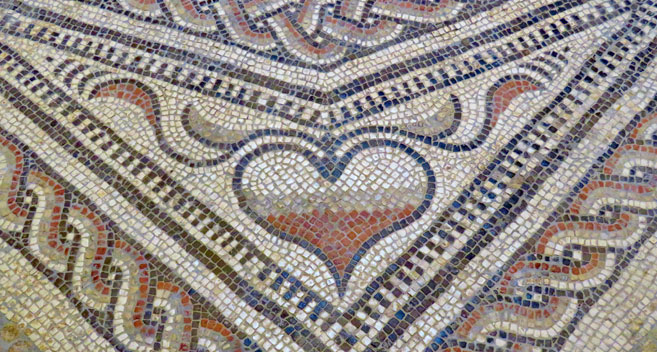
If you’re more artistically inclined, the Henry Lamb: Out of the Shadows exhibition provides a glimpse into the first half of the 20th century. Although a leading figurative artist of his time, this is the first major retrospective of his work in over 30 years and Salisbury Museum seeks to bring his art “Out of the Shadows”. The sheer variety of subjects tackled, from the horrors of both World Wars to middle and upper class portraiture and domestic family scenes, provide a different kind of window into the past. I personally found the changes in Lamb’s artistic style over the years fascinating; whether a reflection of what was in fashion at the time or his own desire to experiment with forms and figures, it shows the passing of time in a way that cannot be seen through individual paintings.
As evening approached I took to the river with Salisbury Punting. With sheep watching from the riverbank and the spire of Salisbury Cathedral peeking through trees, I enjoyed a view that could have been seen by people from the past. This was not only a perfect way to unwind, but also think about how modern Salisbury has been shaped by the landscape. After all, the origin of most British cities is owed to the local rivers that provided a source of water, food, and transport. Salisbury in particular has been built at the confluence of not one or two but five water courses: there's the Nadder, Ebble, Wylye, Bourne, and Avon. It has been said that the blue stones of Stonehenge would float down these rivers from Wales to Salisbury Plain.
The next day I set out to explore Salisbury’s main streets and hidden corners with a Salisbury City Guides walking tour. This was a great way to get a local perspective of the city through not only its history, but also ghost stories, tall tales, and a visit to a location that wasn’t even on my radar. St. Thomas’s Church was constructed in the 13th century for the workers building Salisbury Cathedral, and colourful wooden carvings and a medieval doomsday painting depicting the final judgement provide a unique glimpse into the past. It served as the perfect complement to the Salisbury Cathedral Tower Tour by revealing more about the everyday people who are usually invisible in the history books.
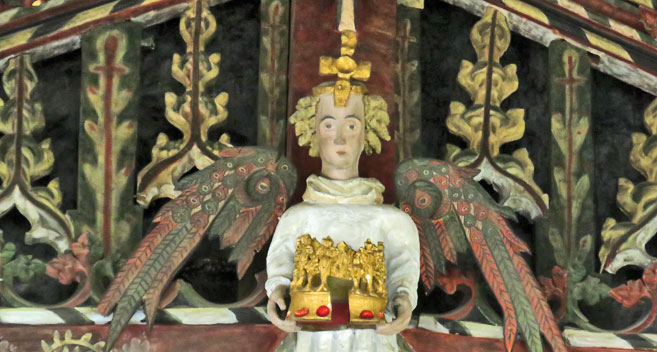
The walking tour finishes in the Cathedral Close where there are two historic houses available to view; the first of these I visited belonged to former Prime Minister Sir Edward Heath. His home of Arundells occupies a plot of land with what has to be one of the best views of the cathedral, and its history is written into the very fabric of the building. The Queen Anne frontage was popular in the 18th century and its symmetry and formalness give it the appearance of a dollhouse. However, the back reveals an architectural secret, six different time periods are present in its construction; from a 13th century canonry to 20th century restorations, that saved the home from demolition. From the back of the house you can also enjoy two acres of garden that run all the way down to the river. Enjoying the peacefulness of this secluded spot is a great way to recharge before proceeding into the house itself.
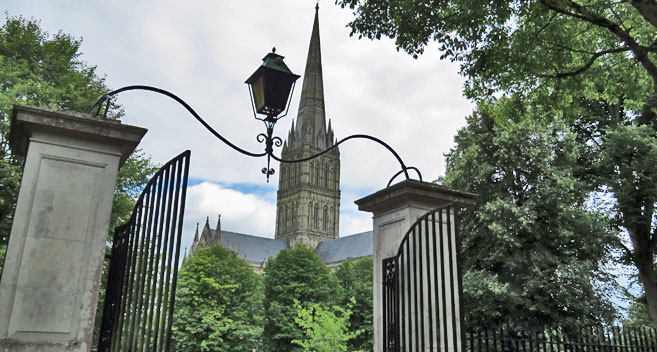
The second home it is possible to visit in the Cathedral Close is the National Trust’s Mompesson House. Built in 1701 for its namesake, Charles Mompesson, the house contains beautiful examples of Georgian plasterwork and a stunning oak staircase. Yet despite these grand flourishes, Mompesson House has remained true to its origins as a family home. As a result, it has a cosy atmosphere; it is easy to imagine settling in for a cup of tea in the parlour or waking up to a view of the cathedral’s spire. I am usually not one for knickknacks, but I found myself bowled over by the Turnbull collection of glassware. These 18th century glasses are elaborately decorated with engraving, enamelling, and twisted stem designs that have survived over two hundred years.

There was still one more stop to make after leaving Mompesson House: afternoon tea overlooking the River Avon at the Legacy Rose and Crown Hotel. This was the ideal opportunity to enjoy melt-in-your-mouth scones, tasty sandwiches, and generous slices of cake while reflecting on how the strands of the past and present come together in Salisbury, much like its five rivers. Is it any wonder I believe in time travel?
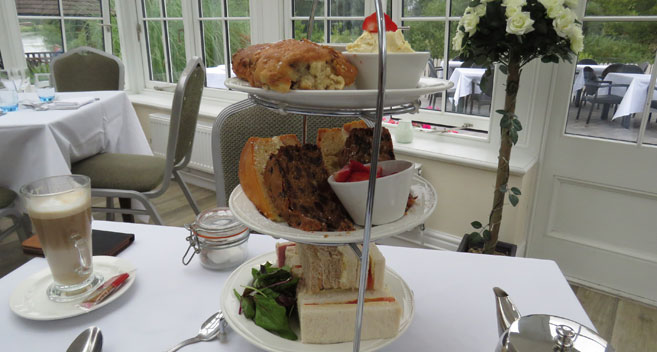
If you’re interested in pursuing your own weekend journey through Salisbury’s vibrant heritage and would like to visit take a look at some more ideas here.
Elaine Massung is an American who calls Wiltshire home. She writes about travel, nature, history, and tea on the MissElaineous Blog.
Related
Comments
Comments are disabled for this post.







 to add an item to your Itinerary basket.
to add an item to your Itinerary basket.
Visit For More Details: https://nursingdissertationhelp.co.uk/nursing-essay
Must-try games:
- https://2048games.cc (Perfect for puzzle lovers)
- https://clickspacebar.com (Quick and fun)
- https://catan.topicsdirect.com (Great with friends)
Hope you enjoy these as much as I do! 🎮